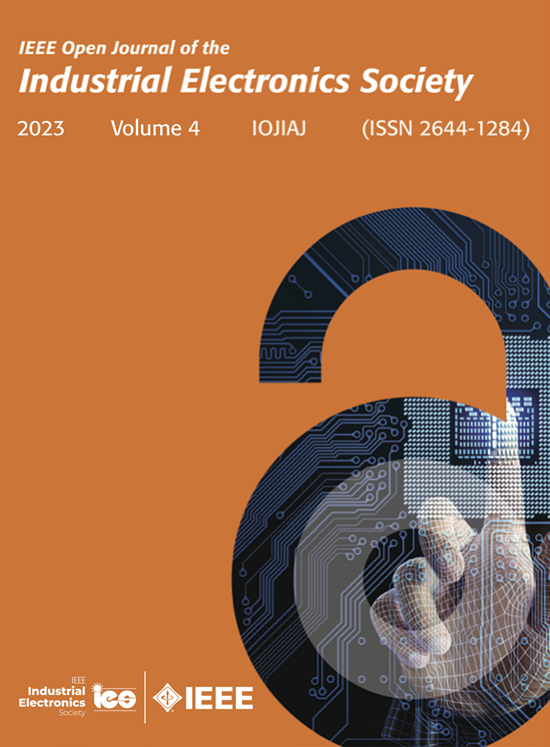A Hidden Surveillant Transmission Line Protection Layer for Cyber-Attack Resilience of Power Systems
IF 4.3
Q1 ENGINEERING, ELECTRICAL & ELECTRONIC
IEEE Open Journal of the Industrial Electronics Society
Pub Date : 2025-01-30
DOI:10.1109/OJIES.2025.3534588
引用次数: 0
Abstract
This article proposes a framework to enhance the resilience of cyber-physical power systems (CPPSs) against cyber-attacks that are capable of bypassing the cyber-based defense mechanisms. To do so, a hidden and local surveillant protection layer is introduced that utilizes isolated measurement devices. Since this surveillance layer relies on local measurements, cyber-attackers cannot affect its performance. However, it requires highly accurate fault detection and classification units (FDCUs) which means requiring additional expenses. Therefore, at the outset, this article employs a deep-learning-based fault detection and classification method using a bidirectional long short-term memory (Bi-LSTM) model to achieve high accuracy with only local transmission line current measurements. The insight and knowledge of the FDCUs are also shared across their neighboring buses through the power-line-carrier communication system. Owing to the need for additional hardware, this system is modeled within a techno-economic framework. The established framework is applied to the CPPS through the evaluation based on distance from average solution (EDAS) method. The EDAS method allows for dynamic adjustments to the integration level of FDCUs based on an analysis of potential cascading failures from various cyber-attack target sets. Extensive simulations conducted on the IEEE 30-bus testbed validate the effectiveness of the proposed framework. The conducted evaluations show that the Bi-LSTM model achieves an impressive accuracy level exceeding 99.66%. This result highlights the robust performance of the proposed surveillant layer and demonstrates its superiority over existing fault detection and classification methods. The scalability of the proposed framework is also confirmed on the IEEE 118-bus testbed.一种用于电力系统抵御网络攻击的隐式监视传输线保护层
本文提出了一个框架,以增强网络物理电力系统(CPPSs)对能够绕过基于网络的防御机制的网络攻击的弹性。为此,引入了一个隐藏的本地监视保护层,利用隔离的测量设备。由于该监视层依赖于本地测量,因此网络攻击者无法影响其性能。然而,它需要高度精确的故障检测和分类单元(fdcu),这意味着需要额外的费用。因此,本文首先采用基于深度学习的故障检测和分类方法,采用双向长短期记忆(Bi-LSTM)模型,仅通过局部传输线电流测量即可实现高精度。fdcu的洞察和知识也通过电力线载波通信系统在相邻总线上共享。由于需要额外的硬件,该系统在技术-经济框架内建模。通过基于平均解距离(EDAS)法的评价,将所建立的框架应用于CPPS。EDAS方法基于对各种网络攻击目标集的潜在级联故障的分析,允许动态调整fdcu的集成水平。在IEEE 30总线测试平台上进行的大量仿真验证了该框架的有效性。结果表明,Bi-LSTM模型的准确率达到了99.66%以上。这一结果突出了所提出的监视层的鲁棒性,并证明了其优于现有的故障检测和分类方法。该框架的可扩展性在IEEE 118总线测试平台上得到了验证。
本文章由计算机程序翻译,如有差异,请以英文原文为准。
求助全文
约1分钟内获得全文
求助全文
来源期刊

IEEE Open Journal of the Industrial Electronics Society
ENGINEERING, ELECTRICAL & ELECTRONIC-
CiteScore
10.80
自引率
2.40%
发文量
33
审稿时长
12 weeks
期刊介绍:
The IEEE Open Journal of the Industrial Electronics Society is dedicated to advancing information-intensive, knowledge-based automation, and digitalization, aiming to enhance various industrial and infrastructural ecosystems including energy, mobility, health, and home/building infrastructure. Encompassing a range of techniques leveraging data and information acquisition, analysis, manipulation, and distribution, the journal strives to achieve greater flexibility, efficiency, effectiveness, reliability, and security within digitalized and networked environments.
Our scope provides a platform for discourse and dissemination of the latest developments in numerous research and innovation areas. These include electrical components and systems, smart grids, industrial cyber-physical systems, motion control, robotics and mechatronics, sensors and actuators, factory and building communication and automation, industrial digitalization, flexible and reconfigurable manufacturing, assistant systems, industrial applications of artificial intelligence and data science, as well as the implementation of machine learning, artificial neural networks, and fuzzy logic. Additionally, we explore human factors in digitalized and networked ecosystems. Join us in exploring and shaping the future of industrial electronics and digitalization.
 求助内容:
求助内容: 应助结果提醒方式:
应助结果提醒方式:


